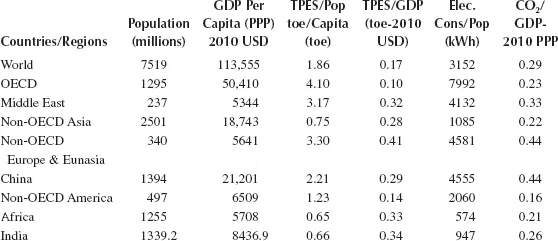
Energy Management
Conservation and Audits
Anil Kumar, Om Prakash, Prashant Singh Chauhan, Samsher Gautam
- 178 pages
- English
- ePUB (mobile friendly)
- Available on iOS & Android
Energy Management
Conservation and Audits
Anil Kumar, Om Prakash, Prashant Singh Chauhan, Samsher Gautam
About This Book
Energy Management: Conservation and Audit discusses the energy scenario, including energy conservation, management, and audit, along with the methodology supported by industrial examples. Energy economics of systems has been elaborated with concepts of life cycle assessment and costing, and rate of return. Topics such as energy storage, co-generation, and waste heat recovery to energy efficiency have discussed. The challenges faced in conserving energy sources (steam and electricity) have elaborated along with the improvements in the lighting sector. Further, it covers optimization procedures for the development in the industry related to energy conservation. The researchers, senior undergraduate, and graduate students focused on Energy Management, Sustainable Energy, Renewable Energy, Energy Audits, and Energy Conservation. This book covers current information related to energy management and includes energy audit and review all the leading equipment (boilers, CHP, pumps, heat exchangers) as well as procedural frameworks (energy audits, action planning, monitoring). It includes energy production and management from an industrial perspective, along with highlighting the various processes involved in energy conservation and auditing in various sectors and associated methods. It also explores future energy options and directions for energy security and sustainability.
Frequently asked questions
1 | Fundamentals of Energy and Energy Scenario |
1.1 FUNDAMENTALS OF ENERGY
1.2 VARIOUS TYPES OF ENERGY
1.2.1 POTENTIAL ENERGY
1.2.1.1 Chemical Energy
1.2.1.2 Nuclear Energy
1.2.1.3 Stored Mechanical Energy
1.2.2 KINETIC ENERGY
1.3 COMMERCIAL AND NON-COMMERCIAL ENERGY
1.3.1 COMMERCIAL ENERGY
1.3.2 NON-COMMERCIAL ENERGY
1.4 GRADES OF ENERGY
1.4.1 HIGH-GRADE ENERGY
1.4.2 LOW-GRADE ENERGY
1.5 ENERGY DEMAND AND SUPPLY IN INDIA
1.5.1 ENERGY DEMAND
1.5.2 ENERGY SUPPLY
1.6 ENERGY SCENARIO IN INDIA
World Energy Statistics
